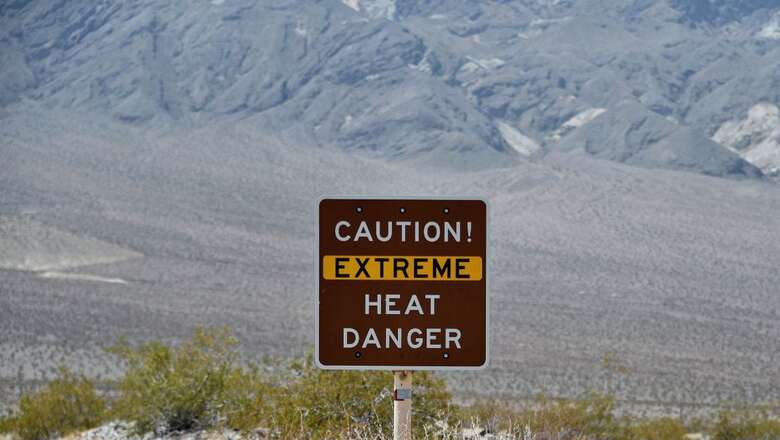
views
From devastating fires in North America and Hawaii to heatwaves in the West and Europe, the year 2023 has been full of extreme weather events.
The last 12 months witnessed extreme heat across the globe which led to wildfires in Canada and Hawaii, torrential rains in several countries killed thousands and boiling oceans.
Extreme Heat
This year countries across the globe registered unusually high temperatures with the scientists confirming that the Earth’s temperature was off the charts this year and officially the hottest year on record.
Every month since June has been the hottest such month on record, and November piled on. August was the hottest and driest on record in India. Japan also experienced its hottest summer on record while in the UK, June’s temperatures were off the charts.
Several countries in the Europe including Spain, Italy, France and others grappled with soaring temperatures. In the US, meanwhile, Arizona’s capital Phoenix set a record for a global heatwave following the 19th straight day of scorching heat reaching 47.2 Celsius.
Record Wildfires
This year experienced worst wildfires in recorded history in the Boreal forests all over the world. Canada suffered through its worst forest fire season in recorded history, with nearly 16.5 million hectares — an area the size of Tunisia — going up in smoke. The country broke the record in late June for wildfire smoke emissions released in a single year and the smoke even reached several cities of the US.
New York City’s air pollution ranked the worst of any city in the world on some days in June as wildfire smoke from Canada covered the city in a sooty haze.
The August 8 fire in the US state of Hawaii was the deadliest wildfire the United States has seen for more than a century. It burned through around 2,000 acres, killing at least 115 people on the island of Maui and laid waste to the historic town of Lahaina, a former Hawaiian royal seat and a thriving tourist hub.
Wildfires in Greece fanned by dry, windy and hot conditions left 26 dead and guzzled through 150,000 hectares, including resorts on the islands of Rhodes and Corfu.
Catastrophic flooding
In September this year, torrential downpours led to waterlogging in countries including Libya, Greece and Spain and flooded parts of Hong Kong and New York City. Thousands of people died in the city of Derna, Libya. Zagora, Greece, saw a record 30 inches of rain, the equivalent of a year and a half of rain falling in 24 hours.
Monsoon rains this year also triggered landslides and flooding in the Himalayan states of Himachal Pradesh and Uttarakhand killing dozens in India.
Warmest winter
Temperature records were also smashed in the southern hemisphere, in the depths of winter. The Argentinian capital Buenos Aires had its warmest August 1 on record, at 30 degrees.
Australia’s winter was also the warmest on record, creating the conditions for what experts fear will be an intense bushfire season this summer.
Boiling seas
The world’s oceans also set a new temperature record in August. Average sea surface temperatures reached an unprecedented 21C for over a week, according to Copernicus, after months of unusually high temperatures.
Both North Atlantic and Mediterranean Sea had never been warmer in a development blamed for depleting marine biodiversity and contributing to global warming.
India saw extreme weather events
India experienced extreme weather events almost every day in the first nine months of this year which led to nearly 3,000 deaths, according to a report by the Centre for Science and Environment (CSE).
The report said the climate-vulnerable country had extreme weather on 86% of days from January to September 2023. The CSE said 2,923 people died, almost two million hectares of crops were ruined, 80,000 homes were destroyed and more than 92,000 animals were killed.
Madhya Pradesh reported the highest number of extreme weather events at 138. However, the largest number of deaths occurred in Bihar (642), followed by Himachal Pradesh (365) and Uttar Pradesh (341).
















Comments
0 comment